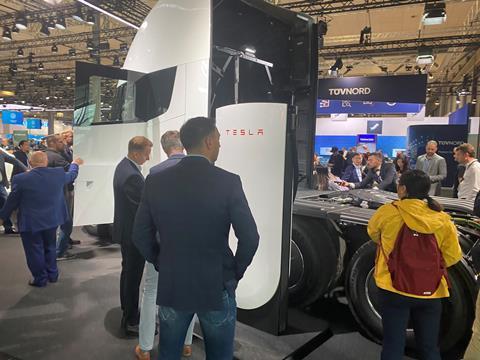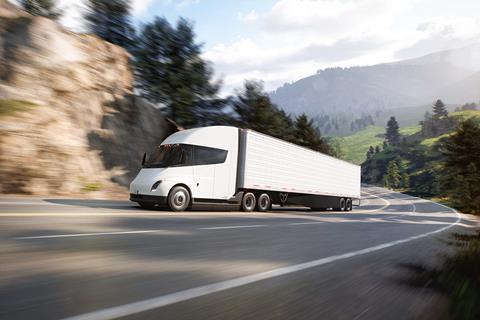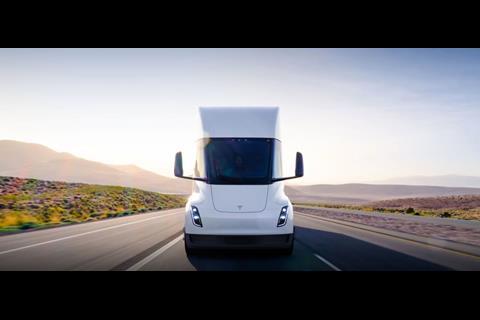At a packed conference session at the IAA Transportation exhibition in Hannover, Dan Priestley, Senior Manager for the Semi at Tesla, outlined the plans for the US auto maker’s European assault with its heavy-duty truck range, hinting at a 2027 market entry for the truck.
In a 15-minute presentation, Priestley consistently referred to “when” Tesla will be coming to Europe with the truck, not if, and explained the launch would follow the ramp up of production of the truck in North America. Tesla is currently building a new factory in North America to scale the production of the vehicle to 50,000 units a year. This site will come on-line in 2026 and Priestly added “Europe will be the next market after we have scaled in North America.

“We are confident the work we do in North America is compatible with Europe,” he added. “We are stressing the vehicles now, so when we do come here we will get the job done.”
In customer trials the trucks are proving very efficient, delivering energy consumption at 100kWh per 100km in operation (equivalent to a fuel consumption of about 12li/100km or 25mpg), he said, and as the vehicle shifts to high volume production, “we’ll see this reduce further”.
A follow-up customer case study conference session at the event between Priestley and Pepsico’s Electrification Programme Manager Dejan Antunovic, confirmed these efficiency performance figures for the fleet of Tesla Semi’s working on long-haul drinks distribution at 35 tonne GCW. While the trucks running on lightweight crisps distribution were performing even better, returning consumption figures of “0.8kw per kilometre,” Antunovic added.
Pepsico has a fleet of over 80 Tesla’s currently running across three depots in California on a variety of short haul distribution and long-haul regional operations. While the initial teething problems with the vehicles had been quickly resolved, Antunovic indicated the bigger challenge is with infrastructure roll-out, a familiar sentiment for anyone looking at EV truck roll-out. “We originally estimated one and a half years for deployment of our in-depot megawatt chargers,” he explained. “As a bare minimum that is more like three years.”
Tesla recognise that coming to Europe will present its own set of challenges, Priestley added. When it comes to in service and support, he said Tesla would look at a range of service options from direct franchise, through independent service agents to trained technicians at customer premises to support the vehicles. “Our goal is to eliminate the requirement for vehicle maintenance completely,” Priestley said, “but we recognise the world brings chaos and we have to look at vehicle repair. Our focus is on how we reduce the time to repair and maintain the trucks and get the vehicle back with the customer as quickly as possible.”
We are excited to bring the Semi to Europe, Priestley said concluding his short presentation, “the future is electric”.

















